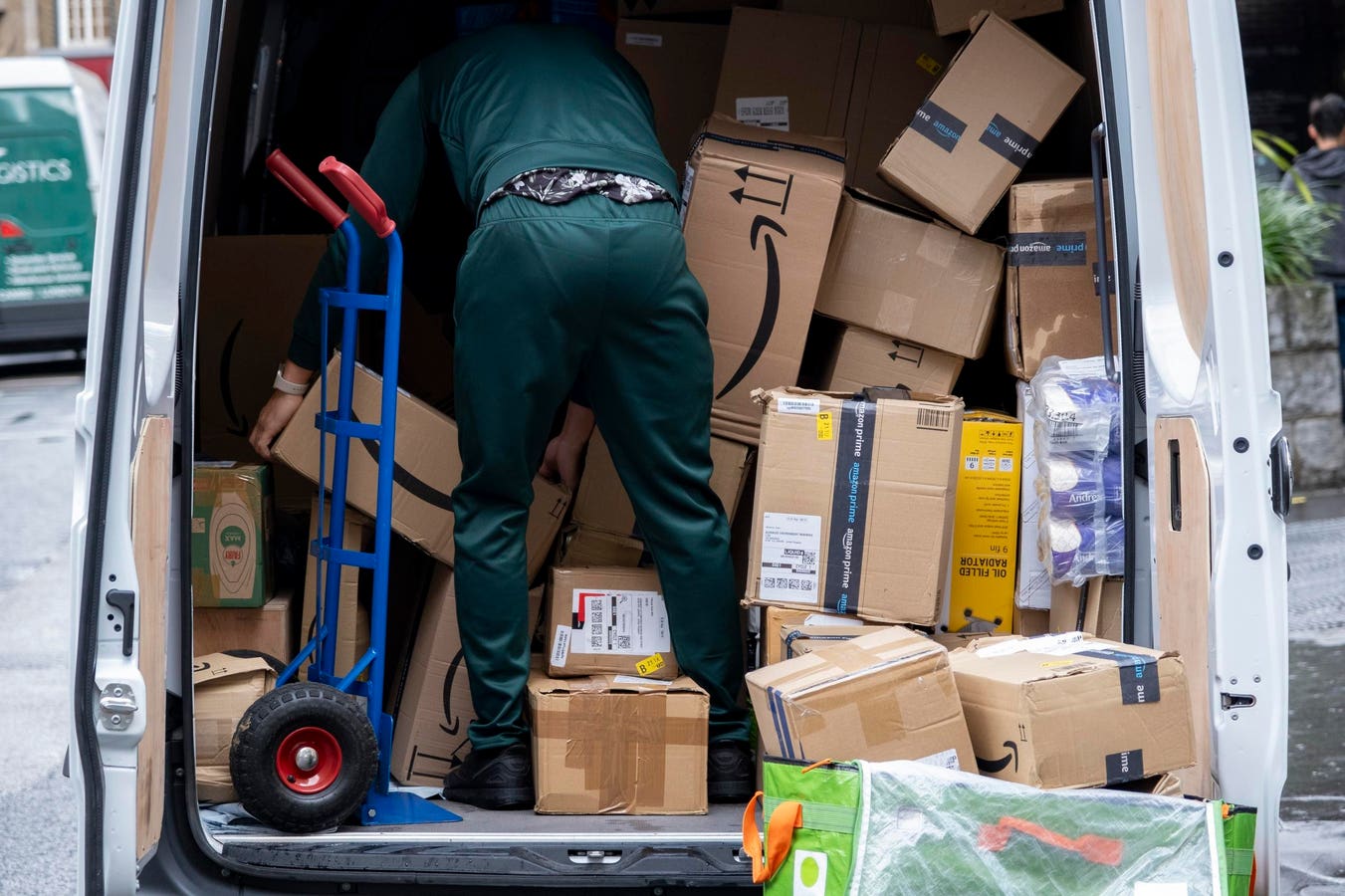Shopping-related emissions from road freight contribute to poor air quality
E-commerce is on the rise, and is projected to surpass US$8 trillion (that’s $8,000,000,000,000) globally in the next three years. With more online shopping comes more delivery vehicles on roads. For cities across the world, that increase in road freight doesn’t just contribute to traffic congestion, it also has a measurable effect on emissions and air quality.
No day of the year better illustrates the impact of e-commerce on our urban environment than Black Friday, which this year falls on November 29th.
Originating in the US, Black Friday is a term used to describe the post-Thanksgiving shopping boom. Officially, it gets its name from the time of year that retailers move from operating at a loss (‘in the red’) to earning a profit (‘in the black’), though that seems to be a sanitized retelling of its real origin story. Today, Black Friday is the busiest day of the year in the US in terms of the total number of shoppers. Cyber Monday, which follows a few days later (this year, on 2nd December), is the most profitable day for US-based e-commerce sellers. According to the US National Retail Federation (NRF), 134.2 million people shopped online across the five days from Thanksgiving Day to Cyber Monday in 2023. 121.4 million people visited physical retail locations during the same period. These are the highest figures yet recorded by the NRF.
Thanks to globalization and e-commerce, Black Friday and Cyber Monday’s spheres of influence now extend far outside of the US. And so too do their environmental impact.
Carbon footprint
Back in 2022, T&E, who describe themselves as “Europe’s leading advocates for clean transport & energy” published their analysis of the truck pollution impact of Black Friday. To do this, they used EU data on monthly retail sales, comparing the percentage increase of sales in November to the average of January to October. From this, they found a significant increase in November sales between 2016 and 2017, which they say “coincides with the wide adoption of Black Friday in continental Europe.” By comparing this to average sales in the same period in prior years, they could come up with estimate of the sales directly attributable to Black Friday. Converting that into truck activity and calculating the associated emissions required another dataset, some reasonable assumptions, and a transport model that calculated fuel consumption for trucks in grams of CO2 per ton-km.
From this, T&E concluded that 1.2 million tons of CO2 would be emitted by trucks transporting Black Friday packages to warehouses and stores around Europe. That’s 94% more than in an average week.
This chimes with what Professor Phil Purnell, a materials engineer at the University of Leeds, told German broadcaster DW in 2022, “Our research shows that 400,000 tons of CO2 will be admitted into the atmosphere as a result of transport for Black Friday in the UK this year alone.”
Of course, emissions generated in transport are dwarfed by those generated during manufacturing, as Purnell explained in the same DW article, “Producing your average laptop releases 100 to 200 kilograms [220-440 lbs] of CO2 into the atmosphere and your average tablet probably releases 50 kilograms… Buying a shirt releases many times more kilograms of CO2 than the kilograms that the shirt weighs.”
With any online shopping, there’s also the question of waste and returns (which often end up as waste). For example, independent UK think tank and charity Green Alliance reported that in 2019, 80% of plastics, textiles and electronic goods went to landfill, incineration or low quality recycling. Optoro, a reverse logistics technology firm, developed an ‘environmental impact model’ that was later verified by the EPA. In a study they published in 2016, they estimated that consumer returns in the US generate 1.8 billion kilograms of waste each year, as well as 11 billion kilograms of carbon emissions.
Dirty air
Of course, delivery trucks don’t just emit carbon dioxide. As I’ve written about numerous times in this column (most recently here), air pollution in our cities varies across the world, but wherever you are, what’s in the air tends to be a cocktail of different compounds that are overwhelmingly generated by road traffic. Almost all people living in large cities breathe elevated levels of nitrogen dioxide (NO2); a pollutant linked to the development of childhood asthma as well as the aggravation of existing asthma symptoms. It is generated by the combustion of fossil fuels in vehicles, energy production, and industrial activities.
The other major pollutant in urban environments is fine particle matter (PM2.5). This is not one compound, but a series of different compounds that have a maximum particle diameter of of 2.5 microns. Its sources are similar to those of NO2, but it also includes tyre wear. The small particle size means that PM2.5 pollutants can penetrate deep into your lungs and make their way into your bloodstream. Exposure to PM2.5 can result in cardiovascular (heart), respiratory (lung), and other types of diseases. PM2.5 levels tend to be highest in low- and middle-income countries, highlighting inequity of access to clean air.
Air pollution has been described as “the greatest UK environmental public health threat,” responsible for up to 43,000 deaths each year. With demand for next-day or even same-day deliveries on the rise in urban areas, and an over-reliance on diesel and petrol vehicles for deliveries, there’s widespread concern that the situation is only going to get worse.
Solutions
UK-based charity, Impact on Urban Health, published a press release yesterday “calling for urgent reform of the freight delivery sector to tackle the escalating air pollution crisis in UK cities.” This follows from their previous study that claimed the “hidden social and environmental costs associated with diesel vans in London total £2.46 billion annually.”
The charity has proposed a range of actions, including more joined-up thinking on freight, and financial support from the government for businesses to access sustainable delivery modes (e.g. cargo bikes) within cities.
They also emphasize a need for more ‘carrier-agnostic’ pick-up points that are accessible to a range of customers rather than those from a single store (e.g Amazon lockers). These pick-up points are often hailed as the key to cutting last-mile deliveries CO2, particularly when people can access them on foot, bike, wheelchair or scooter. With one study forecasting that demand for last-mile delivery will rise 78% globally by 2030, leading to 21% more congestion and higher emissions, it’s clear that urgent action – at all levels – is needed.
Read the full article here





